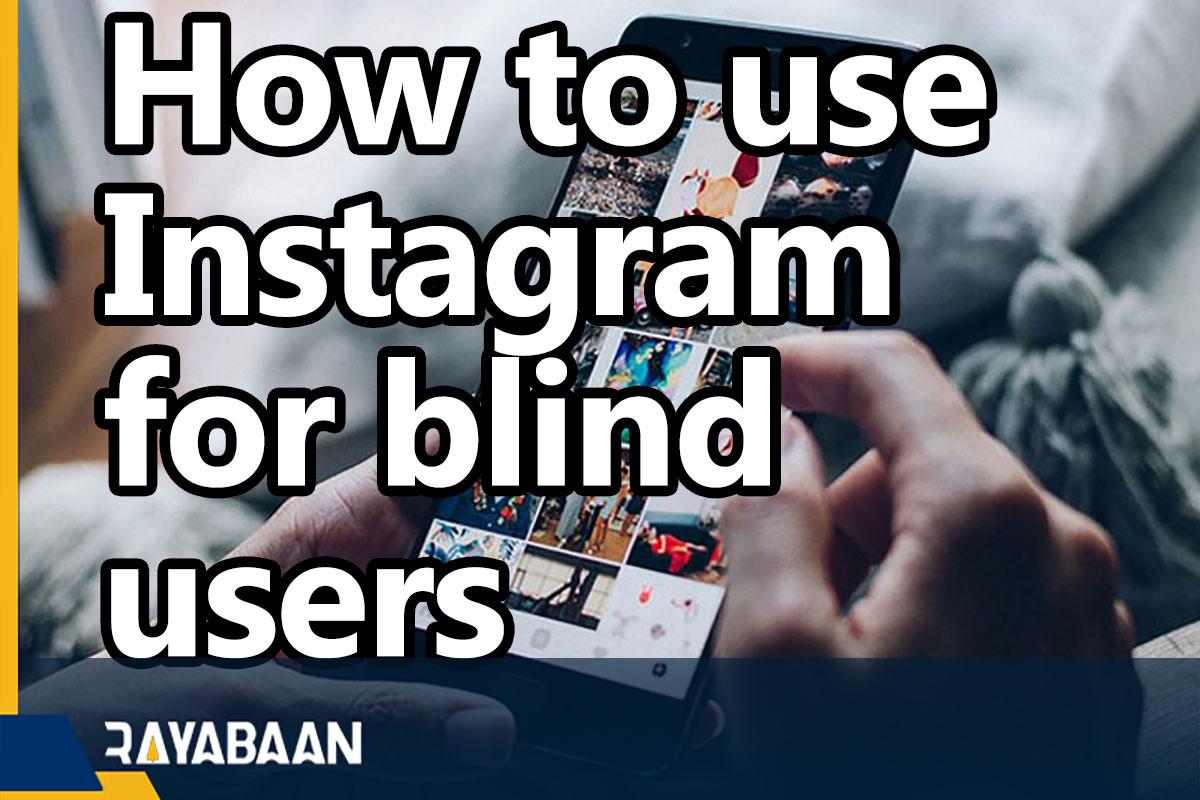How to use Instagram for blind users-tricks 2024
While you may think that visually impaired and blind people do not use Instagram much, some of these people may even use this social network daily, but as you can guess, they face various problems and challenges. In this article, we want to take a look at how these people use Instagram and see how to improve their experience of using this social network for them.
How to use Instagram for blind users
With the screen reader program, it is possible to use Instagram and other social networks for blind and partially sighted people; But to facilitate the benefit of such people from the content of social networks and websites, especially the image content using this tool, there are also difficult challenges.
Blind and partially sighted people can mentally imagine the content and concepts of images shared on various social networks, including Instagram, by using screen reader programs; Of course, these programs have disadvantages that make them not very efficient; But by taking advantage of simple methods, their efficiency can be increased to a significant extent, and as a result, the use of social networks can be made easier and more enjoyable for blind people.
Screen reader programs
Screen reader programs seem strange to healthy and sighted people who quickly see and reject images and texts on Instagram. Its fragmented sounds have no meaning and concept for such people and completely confuse them; But in reality, the voices of these programs are not at all incomprehensible and meaningless, and in fact, they are machine voices that quickly express usernames, date and time of sending posts, as well as the number of likes.
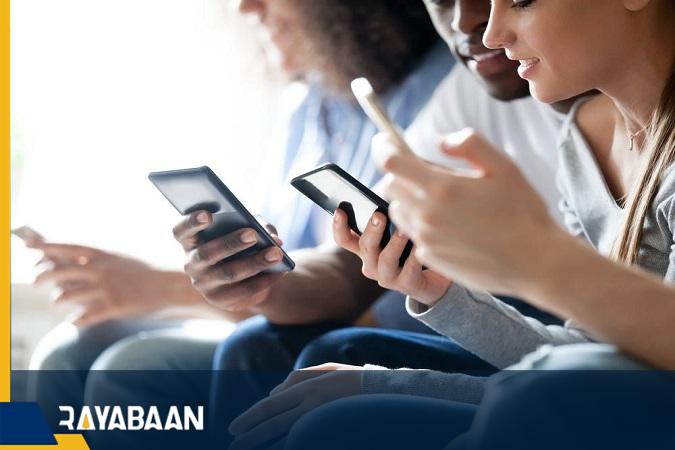
Getting all this information while browsing Instagram and checking posts is equally important for users. If a person has written an alternative text (alt) for an image, the image will be described to him in audio form, and the image may be described, for example, in this way: “James and I are standing in the sea and we are knee-deep in water, the fear on Jame’s face is very clear.” and I’m holding a dead crab in my hand, scaring him and laughing.”
Of course, the text of this audio description, which is the alternative text, must be written in advance by the users for the images so that blind and visually impaired people can understand the images just like healthy people; unfortunately, people usually leave the box related to the alternative text empty and do not pay attention to it. In such cases, the screen reader software reads the alternative text automatically created by Instagram or the user’s device itself.
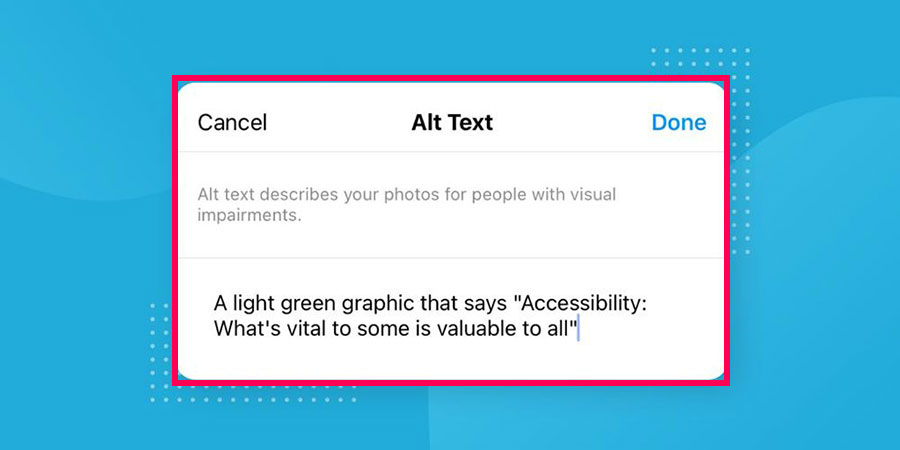
However, according to Danielle McCann, an Instagram coordinator with the National Organization of the Blind in America, automatically generated alt texts for screen readers are not interesting and the result is sometimes funny. Even though the automatically generated alt text is the result of years of machine technology evolution, it still cannot describe the images properly and there are many mistakes in them.
Screen reader program errors
Recently, McCann, who is also blind, said that some time ago he was browsing Instagram with a screen reader and came across an image that the software described as two brown cats sleeping on an uneven surface, but McCann’s wife told him that the image was an advertisement for a clothing store. The bride is a woman in a wedding dress! Therefore, the audio description of that photo had nothing to do with the content of the photo.
These algorithmic interpretation errors are a completely common problem. Let’s check out some other user-reported examples of incorrect audio descriptions of Instagram images by the screen reader app. Before doing this, we must say that the sentences in quotation marks are audio descriptions provided by the screen reader program.
According to the user, the screen reader program described the image of a T-shirt with a picture of a coach as a “red, apple, unicorn T-shirt”.
Another report described the image of a car next to a houseplant as “probably an image of an interior.” In another report, an image of some oysters was described as a “seafood image” and in another case, an image of a frame containing various images was described as “perhaps a carton.”
According to another report, the images in which one or more people can be seen, “is probably an image of one person.”
Although many new and modern phones and tablets today have special features to facilitate use by blind or visually impaired people, such as magnification, creating contrast, or screen reader functions and programs; social networks, including Instagram, are still not optimized as they should be, so that their use is easy or at least possible for blind or partially sighted people, and this process is moving slowly.
If the smartphone user has activated one of the two modes, dark mode or light mode, these settings are also applied when entering some applications and websites, and it is also possible to write alternative texts for images.
In almost all site content management panels (such as WordPress or panels created based on it), it is possible to write alternative text for the main images and images inside the text, but all these features, even though they are considered useful and practical features, cannot Ensure that blind and partially sighted people can easily understand the visual content of texts without any problems.
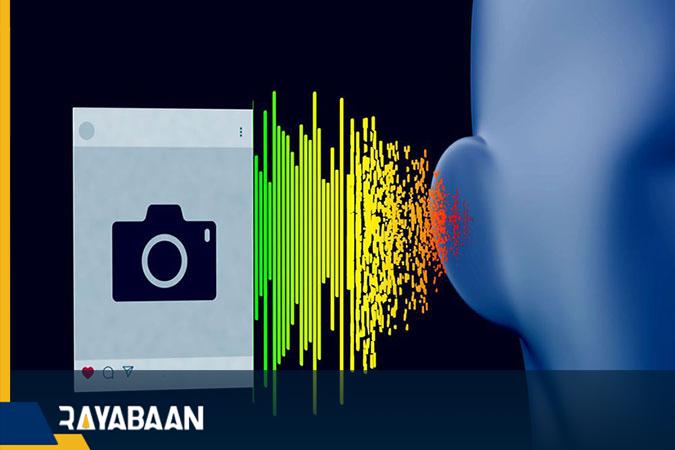
Improving the user experience of visually impaired and blind people
Facilitating the use of social networks by blind and partially sighted people requires a group effort. Blind and partially sighted people should be informed about the capabilities created to facilitate their use of social networks and familiarize themselves with their features, and on the other hand, they should be reminded of the possibility of using these features when these people enter social networks.
A platform can have hundreds of features to facilitate its use by blind or partially sighted people, but until every single person, or at least most of them, is comfortable with these features, they will not use the platform.
At the same time, we should not forget that even people who write alternative texts for images cannot put themselves in the place of blind or partially sighted people, and the alternative texts written by these people usually cannot create a good mental impression of images for blind or partially sighted people. Most of the time, people write the alternative texts of the image quite simply and are generally limited to short phrases.
On the other hand, writing several paragraphs as alternative text to describe a photo makes it difficult for the screen reader program to describe the photo audio; Therefore, the alternative text should be written in such a way that the maximum necessary meaning is conveyed with the shortest text, which is a difficult task.
According to the statement published by the American Foundation of the Blind (AFB), the alt text should be clear and avoid unnecessary expressions, for example, when you want to describe a picture of your pet shared on Instagram, it is not necessary to include information such as Describe its breed or appearance, and for example, if the animal’s face has a certain expression or does a certain thing in the picture, focus more on describing those expressions or actions.
Although the descriptions provided in automatically generated alt texts may one day become more accurate and avoid the glaring errors of today, such texts will undoubtedly never replace human-written texts.
In 2019, due to a technical problem, shared images were not displayed for a while, and instead of images, users saw tags created by artificial intelligence. These tags had descriptions like “This image may contain a standing person“, but of course, the standing person or people can have different poses; For example, they may be hugging each other, or the people in the pictures are making emoticons, or they are standing in front of a window with a beautiful view.
Certainly, if the alternative text for the images shared on social networks is created only by using artificial intelligence and machine learning and without human intervention, blind and partially sighted people cannot accurately imagine the content of the images in their minds and thus In other words, they don’t want to try to mentally imagine visual content; It is possible that such an approach may even make healthy people reluctant to see the content published on these platforms and leave them when the images uploaded on social networks are not displayed for any reason.
According to AFB, proponents of using accessibility features to facilitate the use of social networks or similar platforms for people who are blind or visually impaired believe that creating such features should be done from the ground up and should not be limited to the use of features or plugins. ready designed for this purpose sufficed.
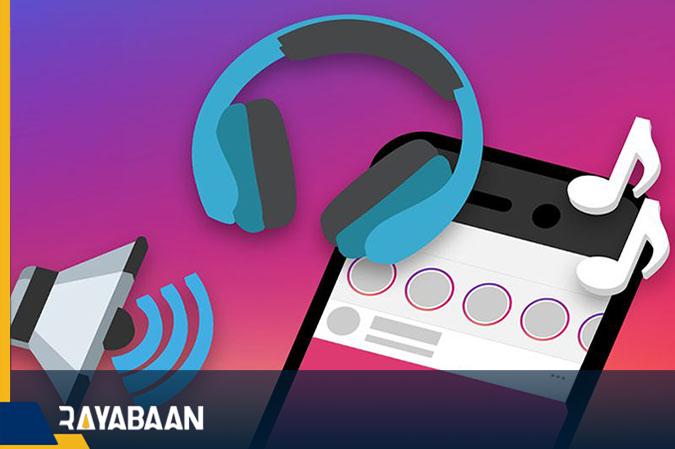
But the developers of many popular social networks, such as Instagram, Twitter, and Tik Tok, have not paid attention to this issue at the beginning of the development process of their platforms and have only tried to use their social networks for people with physical problems by taking advantage of the available and ready features. Make it easier! If such an approach continues in the future, there is no guarantee that blind or partially sighted people will have the desire to use social networks.
Unfortunately, many people think that visually impaired and blind people are not interested in visual content, and this misconception makes developers of social networks or other media providing visual content less motivated and interested in facilitating the use of their platforms by such people.
McCann is very upset about the existence of such a misconception in the minds of healthy people and said that images are also important for blind and partially sighted people. According to him, nowadays social networks have become a full-view mirror of culture, but if blind or partially sighted people cannot imagine the content of the images in their minds, they cannot use the images, which are considered as a kind of social language, as a tool for better familiarity with Different cultures and its understanding use different dimensions.
Christy Smith Berman, the short-sighted editor of the entertainment site Can I Play That, has criticized the fact that images and videos are being circulated on social networks without any audio or text description. “Steven Aquino” (teven Aquino), another visually impaired journalist, has also criticized this issue, although he does not use a screen reader and tries to see the images with a magnifying glass; But still, in some cases, it cannot recognize the content of the images as it should, and it only recognizes that the image is interesting and does not capture anything else.
Writing alternative text for interesting and funny images that contain visual jokes or similar concepts is not easy for every person, and he must have the necessary ability to describe such things in the text, and even in some cases, he must be familiar with concepts related to each other in different cultures. be In addition, some images have complex philosophical concepts that may not be interesting for every person.
Writing alt text for such images is like trying to describe a fascinating culture to your grandfather; Therefore, it can be said that describing such images is considered an almost specialized task and you must have the necessary and deep knowledge about the concepts depicted in these images.
Another problem related to the use of social networks by blind or partially sighted people is that some people use certain formats to write texts. Healthy people easily recognize such texts as texts with a different format, But the screen reader program has a problem in recognizing such texts.
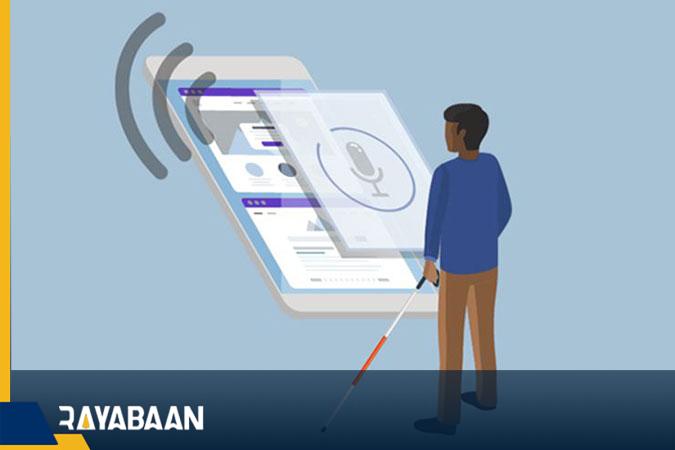
At the same time, screen reader programs have difficulty in recognizing images that have emojis or texts that are created in completely unusual formats (for example, with jumbled and twisted letters) and facilitating the audio description of such images by the screen reader program, they must be added when loading them. Write an alternative text for them; Unfortunately, very few users know this.
According to McCann, nowadays many websites and social networks have created capabilities to facilitate the benefit of blind and partially sighted people from their content; For example, in Tik Tok, the ability to convert speech to text has been created. Hopefully, in the future, social networks will encourage users to add captions, visual descriptions, and alt text.
McCann believes that teaching and conveying concepts to the blind, visually impaired, and other people whose physical problems make it difficult for them to learn is a duty, and social networks should also be committed to this duty.
He hopes that people with vision problems will one day be able to easily recognize the concepts of viral videos and images that are spread and circulated at a high speed on social networks and attract the attention of many people, and until such a goal is not achieved. Such people do not have a sense of communication
In this article, we talked about “How to use Instagram for blind users” and we are waiting for your experiences to use these methods. Please share your thoughts with us.
